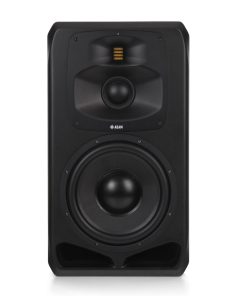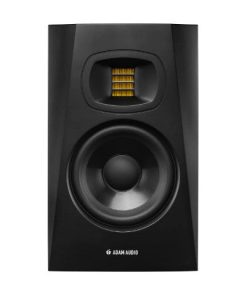Neumann KU 100 Dummy Head Stereo Microphone Neumann
$ 9.499,00 $ 2.374,75
The dummy head has its place, even in the age of surround sound. It is highly recommended by some audio engineers for the rear channels.
When using the KU 100 dummy head, the binaural stereo experience moves the listener into the scene of the original performance, in contrast to other space-related recording techniques, where the acoustic event is moved to the listener.
The dummy head is also used in many industrial applications as a measuring device, for example in acoustic research. The KU 100 can be operated with typical 48 V phantom powering, or from an external power supply unit, or from the built-in battery.
At the bottom of the unit is a switch for the different power supply modes, as well as connectors for balanced and unbalanced output signals. Inside the head are additional switches for 10 dB attenuation and the high-pass filter.
The KU 100 dummy head is a replica of the human head with a microphone built into each ear.
When the recorded audio signal is reproduced through high-quality headphones the listener perceives a sound image almost identical to the one he would have heard at the recording location of the dummy head (head-related stereophony).
When played back through loudspeakers, the sound matches to a high degree that of conventional stereo microphones, placed in the same position. However, a superior quality is added, that of a distinct spatial depth perception.
The KU 100 dummy head is just as easy to use during creative radio drama productions, and music recordings where the room acoustics should be recorded at the same time.
The dummy head is also contributed essentially as an important tool to preserve natural sounds of all kinds. In addition, the dummy head is frequently used to examine and document the influence of noise in industrial applications at various working places under realistic conditions.
Des weiteren wird der Kunstkopf zur Untersuchung und zur Dokumentation von Lärmeinflüssen an Maschinen und an Arbeitsplätzen unter wirklichkeitsgetreuen Bedingungen eingesetzt.
The KU 100 uses transformerless circuitry with the advantage of high output capability, fast transient response, and extremely low self noise. The usual output transformers are replaced by electronic circuits. As with traditional transformers, this technique ensures good common mode rejection, and prevents RF interference, that may influence the balanced audio signals.
The dummy head provides balanced (XLR) and unbalanced (BNC) outputs. It can be powered in three different modes:
from an external P 48 phantom power supply,
with batteries as part of the internal battery supply,
or from an external AC mains supply (included with the system).
A 10 dB switch inside the head attenuates the sensitivity. A second switch selects the cutoff frequency of the high-pass filter to be either linear, 40 Hz, or 150 Hz.
The KU 100 comes in a robust aluminum carrying case, together with an external power supply unit, a 5-pin XLR cable, and an adapter cable that splits the 5-pin XLR output into two 3-pin XLR connectors.
- Dummy head for head-related stereophony
- Pressure transducer with flat diffuse-field frequency response
- Loudspeaker compatible
- Transformerless circuitry
- Two-stage switchable low frequency roll-off
- Switchable 10 dB preattenuation
- Balanced and unbalanced outputs (XLR and BNC)
Prompt Delivery and Professional Packaging
Our long-standing partnership with UPS FedEx DHL and other global carriers lets us offer a range of shipping services. Our warehouse staff is extremely skilled and will package your items according to our precise and exact specifications. Your goods will undergo an extensive inspection and be safely packaged prior to being sent out. Each day, we ship to thousands of customers in many countries. The fact that we are committed to becoming the biggest online retailer in the World is clear. These warehouses are in Europe in the same way as they are in USA.
Note: Orders that include more than one item are assigned a processing period depending on the item.
Before shipping, we will inspect thoroughly the items you have ordered. Most orders are shipped within 48 hours. Expected delivery time is between 3-7 days.
Returns
Stock is dynamic. It's not entirely managed by us since we are involved with multiple entities, including the factory and the storage. The actual stock can change at any moment. It is possible that your order may be out of stock once the order has been placed.
Our policy lasts for 30 days. We cannot exchange or refund your order if it has been 30 days from the date of purchase.
For your item to be returned it must be in its original packaging, unopened and in the condition you received it. The item must be in its original packaging.
Related products
Recording Equipments
Mic Preamp
Accessories
Accessories
Accessories
Microphones
Headphones
Monitor
Monitor Systems
Microphones
Accessories
Monitor
Monitor Systems
Microphones
500 Series
Recording Equipments
Microphones
Monitor Systems
Recording Equipments
Monitor Systems
Microphones
Monitor
Monitor
Headphones
Subwoofer
Recording Equipments

































































